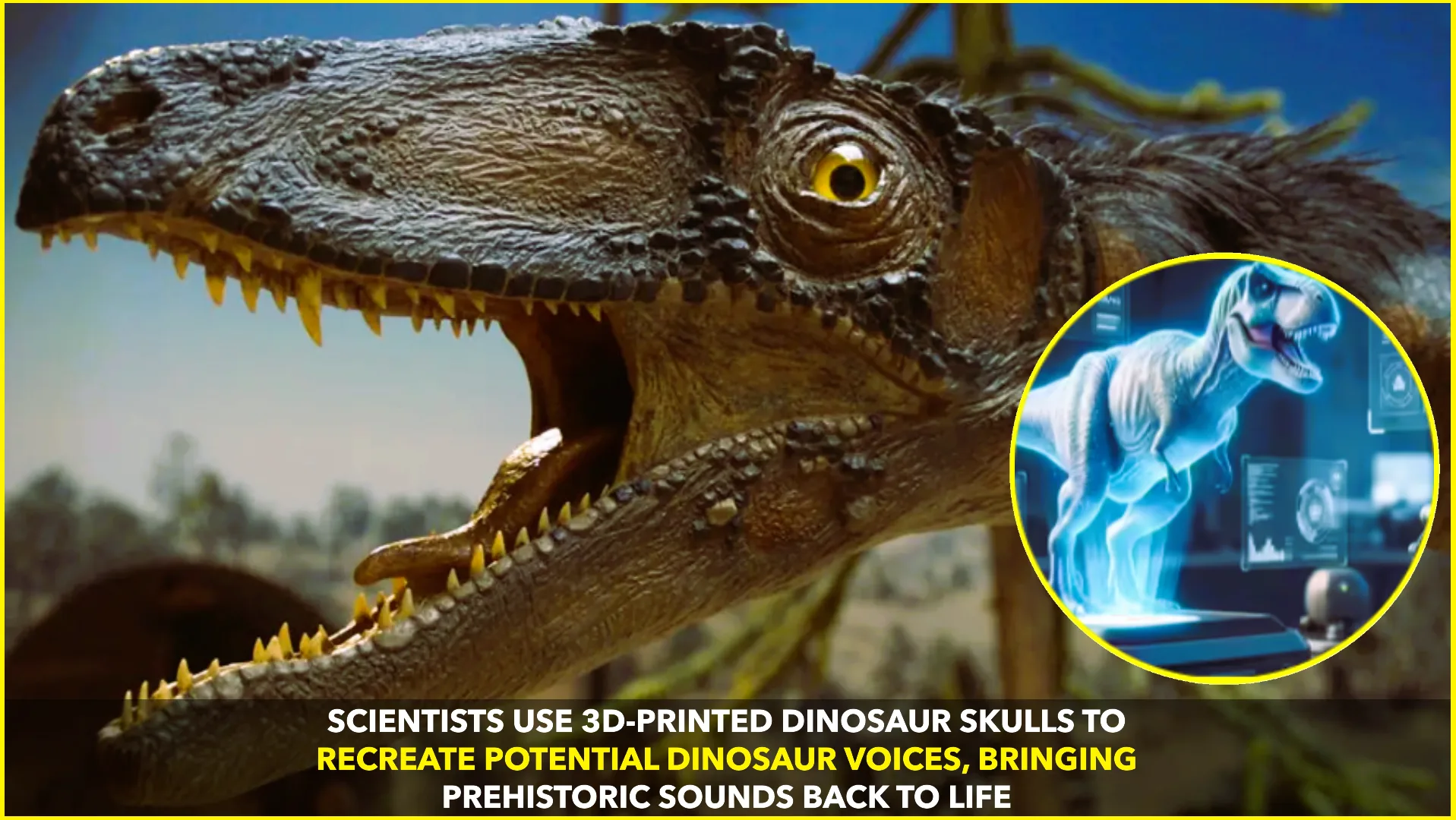For more than a century, dinosaurs have thundered across cinema screens with roars born of imagination rather than evidence. Now, scientists and artists have teamed up to give us a closer approximation of how dinosaurs might have truly sounded—raising technology, creativity and science in one bold experiment.
At Southern Methodist University in Dallas, Associate Professor Courtney Brown and her team have created the Dinosaur Choir, a pioneering project that uses 3D-printed skulls, breath sensors, and computational vocal models to resurrect the calls of creatures that vanished 66 million years ago Fast Company+3Interesting Engineering+3SMU+3.
From CT Scans to Sound Sculptures
The journey began with CT scans of the Corythosaurus, a duck-billed dinosaur famous for its hollow, crest-shaped skull. Researchers used these scans to reconstruct the animal’s nasal airways and then 3D-print a realistic replica of its skull and internal passages Interesting Engineering+2SMU+2.
Initially, Brown equipped the printed skull with a mechanical larynx. But the pandemic and concern for hygiene led to a rethink: the current version relies on computer models and sensors, not direct airflow. Instead of blowing into a mouthpiece, users speak or sing, triggering a digital sound source that plays through the skull model Interesting Engineering+2WIRED+2.
Singing Like a Dinosaur
The system includes breath-detection microphones and even face-tracking cameras that capture mouth shape. Those inputs then feed into different bioacoustic vocal models—programmed simulations inspired by bird syrinx anatomy, such as that of doves or ravens. By switching models or adjusting parameters like trachea length or vocal-membrane tension, users can explore alternate possibilities for dinosaur vocalization Fast Company+3Interesting Engineering+3SMU+3.
According to Brown, computational flexibility is essential: since dinosaur vocal organs aren’t preserved in fossils, multiple biologically plausible hypotheses must be explored. The syringeal (bird-like) model was chosen based on recent evidence suggesting some dinosaurs may have had a syrinx rather than a mammalian-style larynx WIRED+2Fast Company+2.
A Choir Wins Recognition
The Dinosaur Choir earned third place in the 2025 Guthman Musical Instrument Competition at Georgia Tech—an international showcase for cutting-edge musical innovation. Brown, along with collaborator Cezary Gajewski from the University of Alberta, impressed judges with both technical depth and artistic resonance.
Student researchers from SMU’s First Year Research Experience (FYRE) program, including Ella Halverson and Qien Shensun, played key roles—co-authoring papers, composing music, and performing a piece titled Anger at the Asteroid as part of the “Dinosaur Trio” installation SMU+1.
Sounds that Shatter Stereotypes
Instead of thunderous roars, the Dinosaur Choir often produces sounds that researchers describe as “gentle, mournful, conversational or wailing,” more akin to social calls than Jurassic-style screams. That challenges the common pop-culture image of dinosaur vocalizations.
In Brown’s own words, “By blowing into the dinosaur, you kind of become one with it… I’m interested in developing deep empathy with something that is extinct” Interesting Engineering+1.
Looking to the Future
Brown plans to open-source the 3D-print files and software, so dinosaur choir installations and performances can appear across museums, schools, and festivals globally. The team also intends to develop instruments for additional species—like the armored nodosaur, whose complex nasal passages offer intriguing acoustic possibilities Interesting Engineering+2WIRED+2.
While it’s scientifically impossible to know exactly how dinosaurs sounded, projects like Dinosaur Choir bring us closer to plausible approximations—combining rigorous research, creative expression, and immersive experiences that blur the line between science and art.










